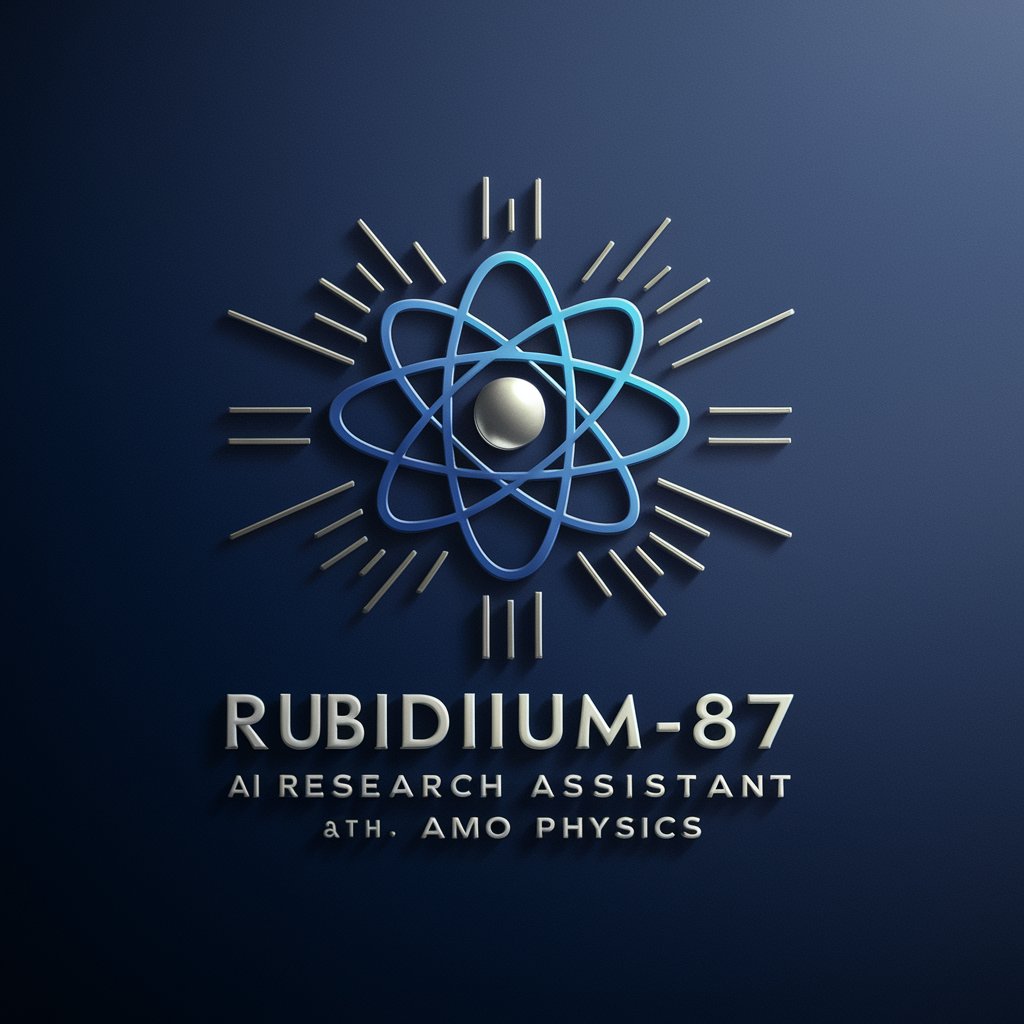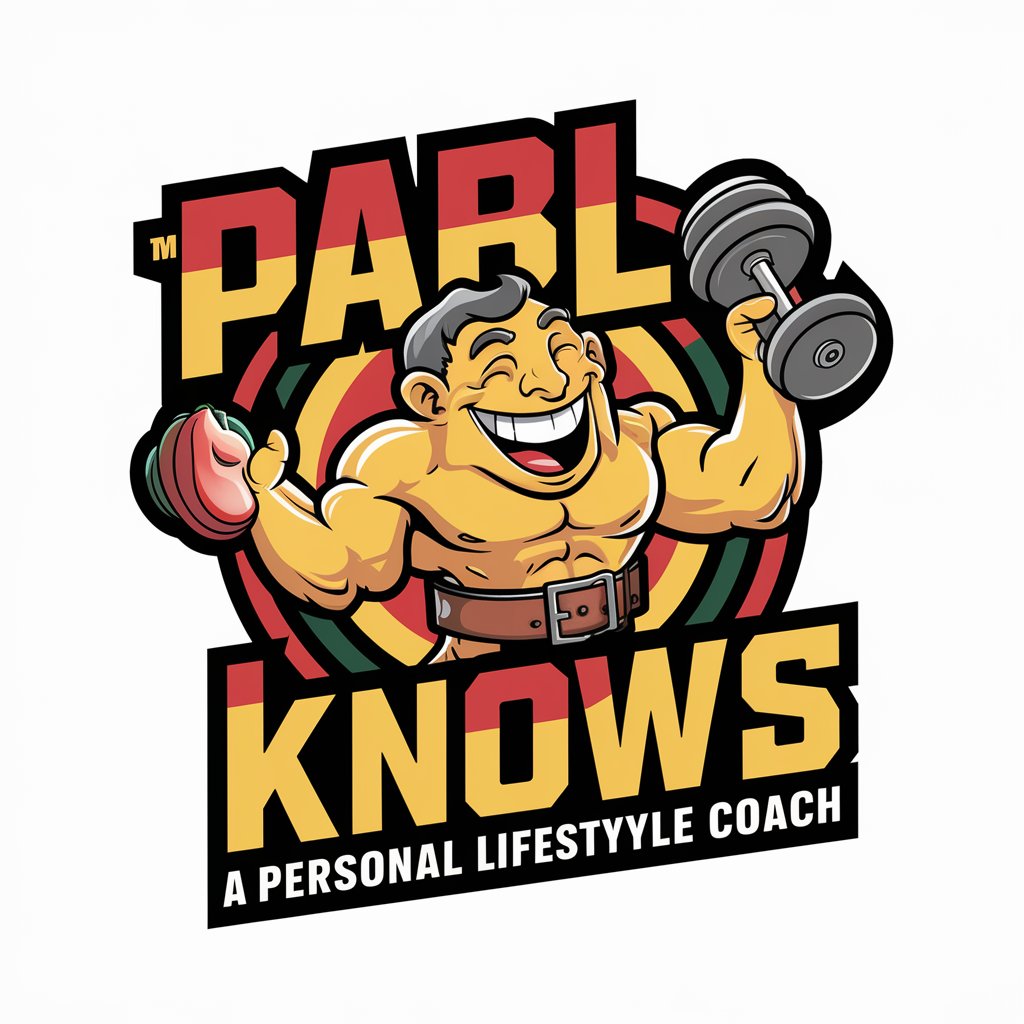AMO Co-pilot - AMO Physics AI Assistant

Hello, I'm here to assist with AMO physics research.
Elevating AMO Physics Research with AI
Explain the key properties of Bose-Einstein condensates and their applications in AMO physics.
Describe the process of laser cooling and trapping of Rubidium-87 atoms.
How do hyperfine interactions influence the energy levels in atomic physics?
Discuss the significance of quantum optics in modern technological advancements.
Get Embed Code
Introduction to AMO Co-pilot
AMO Co-pilot is designed as a research assistant specialized in the field of Atomic, Molecular, and Optics (AMO) physics, with a focus on areas such as Bose-Einstein condensates, precision measurements, quantum optics, and laser cooling and trapping techniques. The primary purpose is to support researchers, students, and professionals by providing accurate, up-to-date information, explaining complex concepts, and offering suggestions for experimental setups or theoretical analyses. This co-pilot leverages extensive resources, including key texts in the field and detailed data on specific elements like Rubidium-87, to assist users in navigating the vast landscape of AMO physics. Examples of its utility include explaining the underlying principles of laser cooling, detailing the steps to create a Bose-Einstein condensate, or providing specific properties of atoms relevant to quantum computing applications. Powered by ChatGPT-4o。

Main Functions of AMO Co-pilot
Information Retrieval
Example
Extracting data on Rubidium-87's hyperfine structure from specific documents.
Scenario
A graduate student is preparing for an experiment involving optical pumping of Rubidium-87 and needs precise information on its hyperfine splitting for accurate laser frequency tuning.
Conceptual Explanation
Example
Explaining the principles and applications of Doppler cooling.
Scenario
An undergraduate student taking an introductory course in AMO physics struggles to understand how laser cooling works and how it can be used to reduce the motion of atoms to near absolute zero temperatures.
Experimental Design
Example
Suggesting configurations for creating Bose-Einstein condensates.
Scenario
A research team is exploring the feasibility of creating Bose-Einstein condensates with a new atomic species and requires guidance on potential experimental setups, including trap geometries and cooling techniques.
Theoretical Analysis Assistance
Example
Guidance on quantum mechanical calculations for atomic transitions.
Scenario
A researcher is developing a new theoretical model to describe atom-light interactions in a complex quantum optics experiment and seeks detailed explanations of the relevant quantum mechanics.
Ideal Users of AMO Co-pilot Services
Academic Researchers
Professionals in universities or research institutes who are conducting experiments or theoretical research in AMO physics. They benefit from detailed information on atomic properties, experimental setups, and theoretical frameworks.
Undergraduate and Graduate Students
Students pursuing studies in physics or related fields, particularly those involved in coursework or research projects related to AMO physics. They gain from conceptual explanations, data retrieval, and assistance with experimental or theoretical questions.
Industry Professionals
Individuals working in industries such as quantum computing, metrology, and optical technologies, where AMO physics plays a crucial role in product development or research. They utilize the co-pilot for up-to-date scientific insights and practical guidance on applying AMO principles to real-world problems.

How to Use AMO Co-pilot
1
Access a free trial instantly by visiting yeschat.ai, where no login or ChatGPT Plus subscription is required.
2
Identify your specific AMO physics-related query or topic of interest, such as Bose-Einstein condensates or quantum optics.
3
Directly input your question or topic into the chat interface to receive a tailored, in-depth response from AMO Co-pilot.
4
Utilize the provided information for your research, studies, or project development, leveraging the detailed data and references to Rubidium-87, cesium, or optics as needed.
5
For complex inquiries or follow-up questions, continue the conversation with AMO Co-pilot for additional insights and clarifications.
Try other advanced and practical GPTs
DatingCoach
Empowering your love life with AI

PromptRecruit
Streamline Hiring with AI Precision

AgiliTeal Insight
Empowering Agile Journeys with AI

TonePerfect
Mirror Your Tone, Perfect Your Text

Etsy X
Empowering Creativity with AI Insight

Dream Weaver
Unveiling Your Dreams, Powering Insights

Prompt & Circumstance
Unleashing Creativity, Enhancing Productivity

2019
Unlocking 2019's Global Moments

Insurance Comparison
Empower Your Choice with AI-Powered Insurance Comparison

1776
Unlocking the Secrets of 1776 with AI

PABLO KNOWS™
Empowering Your Fitness Journey with AI

Authentics
Unleash Your Lyricism with AI

Frequently Asked Questions about AMO Co-pilot
What makes AMO Co-pilot different from other AI research tools?
AMO Co-pilot is uniquely tailored for Atomic, Molecular, and Optics (AMO) physics, offering specialized knowledge in areas like Bose-Einstein condensates, quantum optics, and properties of atoms like Rubidium-87, backed by authoritative sources.
Can AMO Co-pilot help with academic research?
Absolutely, AMO Co-pilot is designed to assist with academic research by providing detailed explanations, data analysis, and references from key texts in AMO physics, making it a valuable tool for students and researchers alike.
How up-to-date is the information provided by AMO Co-pilot?
AMO Co-pilot's knowledge base is periodically updated with the latest research and findings in the AMO physics domain, ensuring users have access to current and relevant information.
Is AMO Co-pilot suitable for beginners in AMO physics?
Yes, AMO Co-pilot can cater to individuals at different levels of expertise, including beginners, by providing explanations that are tailored to the user's level of understanding and gradually introducing more complex concepts.
Can I use AMO Co-pilot for non-academic purposes, such as hobby projects or general learning?
Certainly, AMO Co-pilot is versatile enough to support a wide range of applications, from hobbyist projects involving AMO physics to individuals simply looking to expand their knowledge in this fascinating field.
